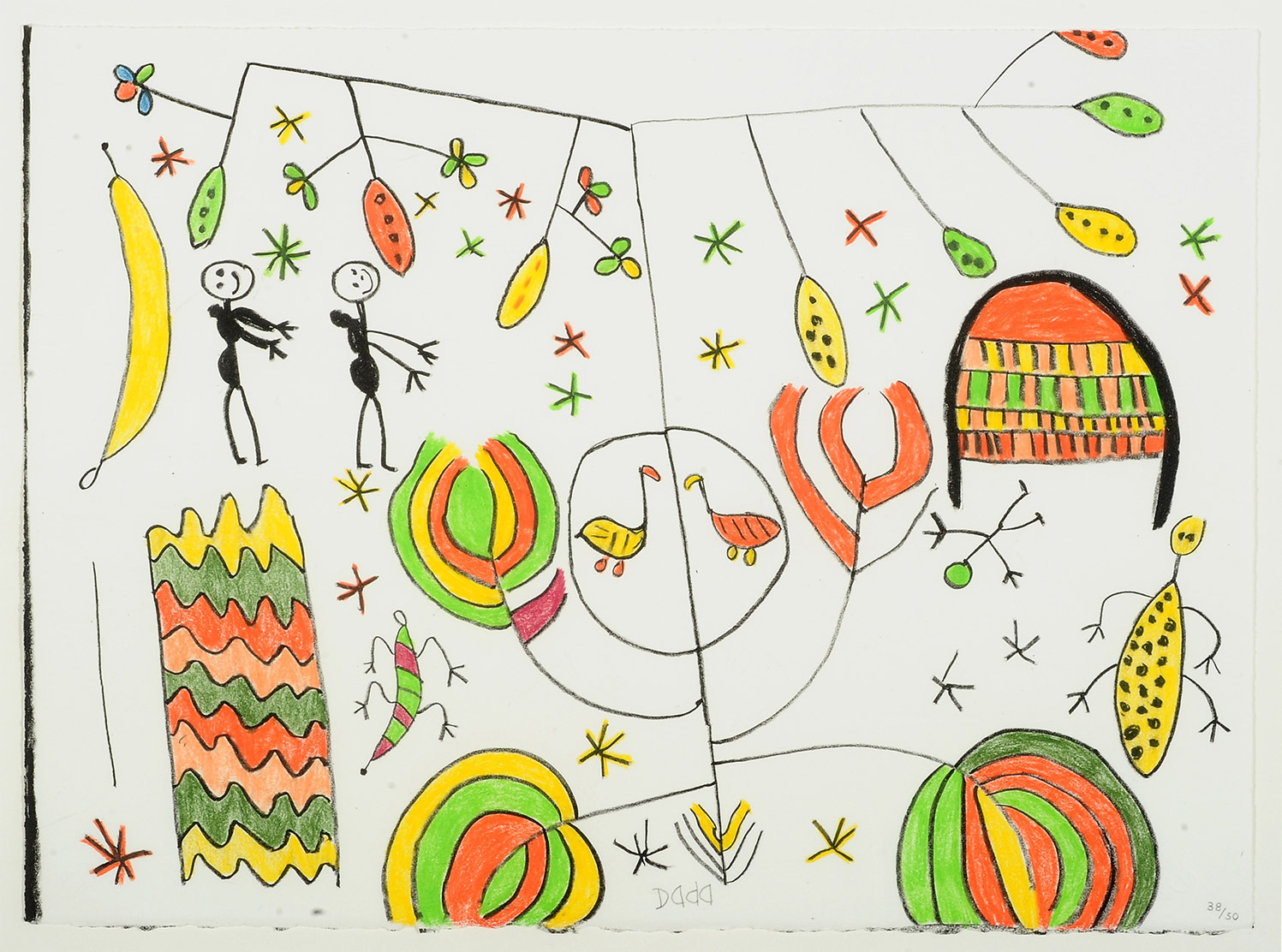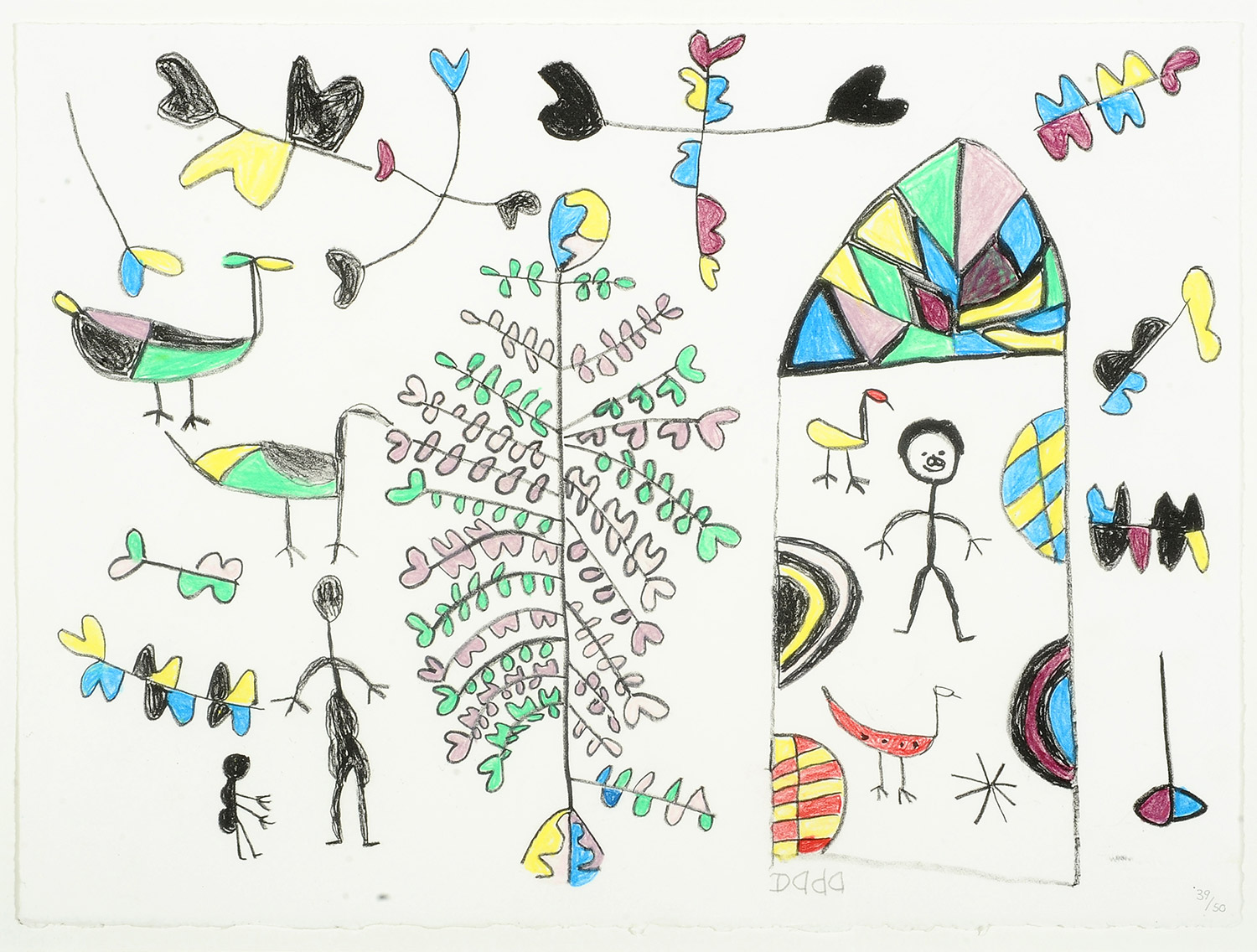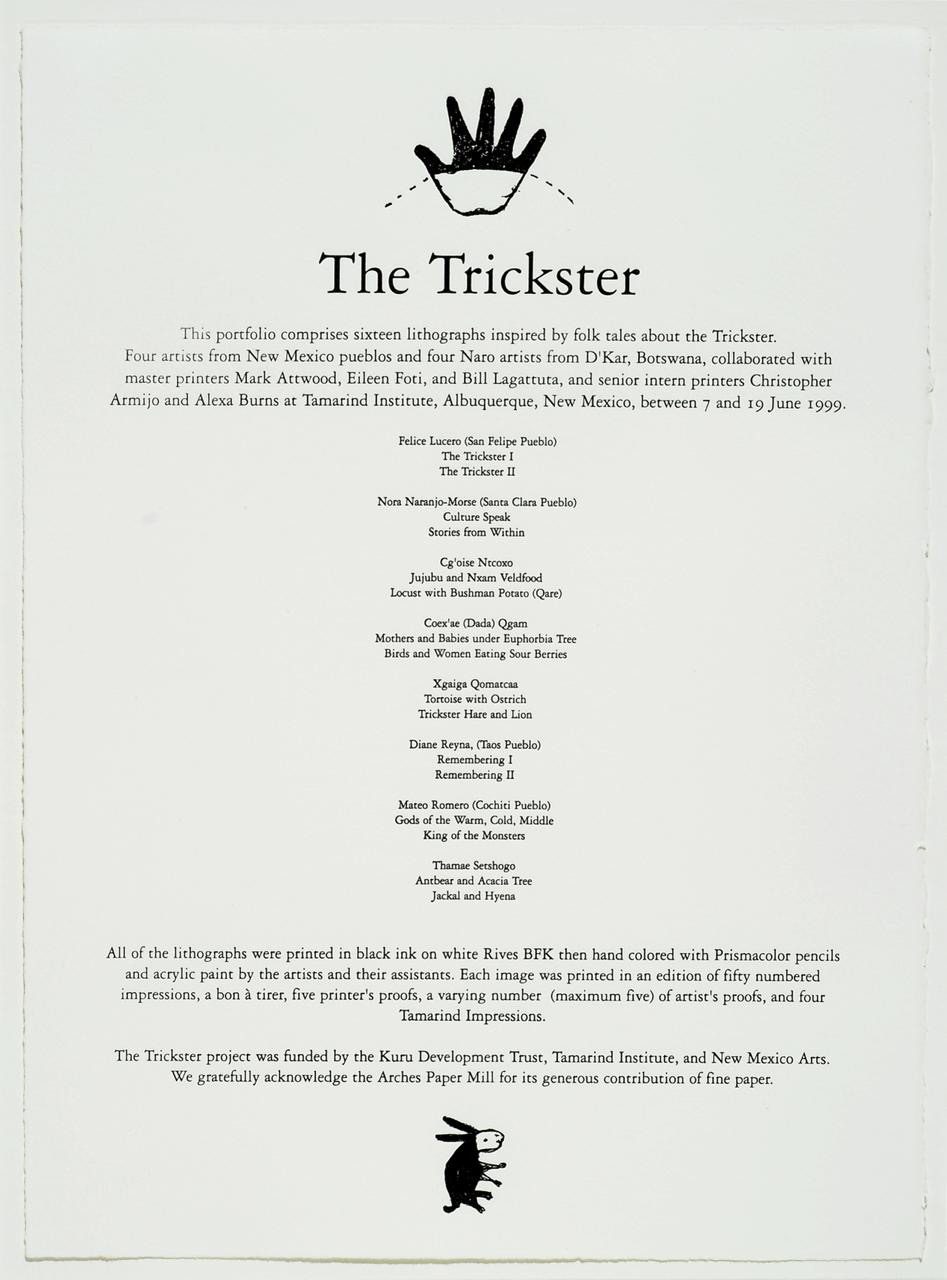COEX’AE ‘DADA’ QGAM (1934 – 2008)
BIOGRAPHY
Coex’ae ‘Dada’ Qgam was an artist from Ghanzi, Botswana. She attended just three months of primary school, later working as a child minder and domestic worker. Qgam had an extensive knowledge of her people’s traditions, storytelling and healing practices. Her first exposure to textile art was in Namibia, when an employer taught her needlework and embroidery. Fluent in five African languages, Qgam joined The Kuru Art Project in 1990 as a translator. Having had difficulty in explaining techniques verbally, she started illustrating them herself and so created her first paintings.
Qgam worked in a direct, clear way. Her use of colour was bright and bold – in contrast to the monochrome surroundings of the Kalahari where she lived.
She contributed images to the unique artists’ book Quaqaua and was also the principal author of the book. Published by The Artists’ Press and The Kuru Art Project, the book was inspired by the folk heroine Qauqaua. Lying on a pan of fragmented rock, close to the Botswana border in Namibia, is a small boulder, which looks so different from the surrounding jagged landscape that it appears as if it must have somehow been placed there. The Bushmen or San living in the nearby village of D’kar talk of this rock as being the body of Qauqaua. The book is printed in English and in Naro (the predominant San language of the Ghanzi district) – until recently, a spoken language only – and features prints made in collaboration with The Artists’ Press and other members of The Kuru Art Project (Thamae Sethogo, Qwaa Mangana, Cgose Ncoxo [whose work is also held in the SABC Art Collection], Sobe Sobe, Nxabe Eland, Coex’ae Bob, Qhaeqhao Moses and Thama Kase).
The images were drawn directly onto the lithographic printing plates by the artists during a collaborative workshop in 1994. Mark Attwood worked with the artists at their studio in D’Kar, proofing the litho plates on an etching press. The drawn plates were taken to Johannesburg where the edition was printed. Each impression was hand inked and printed on a hand-crank litho press. A total of 61 plates were used to complete 11 prints.




